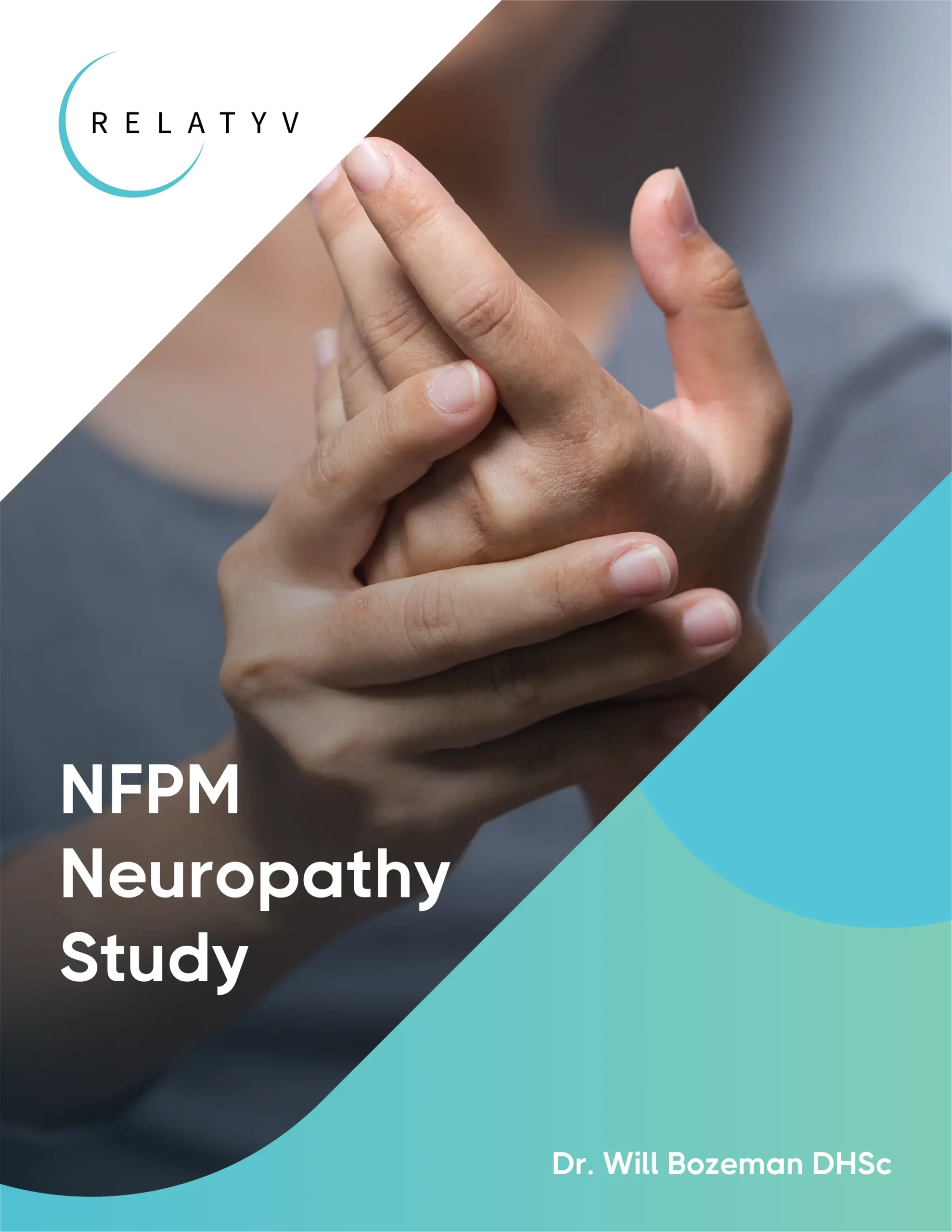Muscle Spasms

Beyond The Contractions: Muscle Spasm Vs. Twitch
Read More
July 28, 2023
Muscle spasms vs. muscle cramps, are you struggling to pinpoint their differences? You’re not to blame if you thought these two conditions were the same. The terms “spasms” and “cramps” are often used interchangeably, but in reality, they have some distinct characteristics that set them apart as separate conditions.
In this article, we will explore the factors that determine muscle spasms and cramps, delving into their definitions, similarities, and differences. Understanding these specific nuances can help you identify the specific condition you might be experiencing.
By doing so, you can seek the appropriate treatment and find relief from these uncomfortable and often painful conditions.
So let’s dive in and uncover the unique differences between muscle spasms and cramps, helping you find the effective relief you deserve.
A muscle spasm refers to the sudden, involuntary contraction and relaxation of a muscle or group of muscles. It occurs when the nerves that control muscle movements malfunction, which then leads to the muscles tightening and contracting abruptly.
Muscle spasm episodes can be frustrating as they have a tendency to recur intermittently and unpredictably, potentially interrupting your everyday activities. For example, you might experience a muscle spasm if you suddenly feel your calf muscle involuntarily tightening and contracting during a strenuous exercise session.
Muscle spasms can be triggered by various factors, such as muscle fatigue from overuse, dehydration, electrolyte imbalances, muscle strain due to injury, or underlying medical conditions.
Anyone who exercises regularly can experience muscle spasms. However, they are commonly seen in athletes, individuals with physically demanding jobs, or those with certain medical conditions. These groups are more prone to muscle spasms due to the increased stress and strain they place on their muscles.
Unlike muscle spasms, muscle cramps are commonly associated with sustained muscle contraction. They can be intense and painful, involving the contraction of a muscle or group of muscles. Muscle cramps will occur spontaneously, often happening during or after exercise, but they can also occur at rest.
Imagine you are halfway through a long hike, and suddenly you feel an intense, excruciating contraction in your thigh muscle, causing fierce pain and discomfort. This is a prime example of what a muscle cramp can feel like.
To put it simply, while both muscle spasms and cramps involve involuntary muscle contractions, spasms are often characterized by sudden and involuntary contractions caused by nerve malfunction, while cramps are intense contractions typically triggered by sustained muscle exertion.
Understanding these differences can help you identify the specific condition you may be experiencing and seek appropriate treatment or implement preventive measures for relief.
Still feeling confused? Don’t worry, it’s understandable. In reality, there are indeed more similarities than differences between these two conditions, which we will talk about next.
Although muscle spasms and cramps are distinct conditions, there are many similarities in their characteristics and symptoms. Let’s explore some of these similar factors:
Both muscle spasms and cramps share the sensation of a tense muscle contraction, which can be accompanied by pain and discomfort. However, the severity of pain and discomfort may vary based on the muscle group affected, with smaller muscles potentially causing less intense pain compared to larger muscle groups
.
Both muscle spasms and cramps can cause pain and discomfort. The intensity of the pain can vary, ranging from mild to severe. It is important to note that the duration and frequency of pain may differ between the two conditions, which are discussed below.
Muscle cramps tend to be more short-lived compared to muscle spasms. Cramps typically last for a few seconds to a few minutes, while muscle spasms can persist for longer durations, sometimes even hours.
Additionally, the affected muscle groups in both muscle spasms and cramps tend to be similar. Common areas include the calves, thighs, feet, hands, or back. So, whether it’s a muscle spasm or a cramp, you might experience these sensations and discomfort in the same muscle groups.
While both muscle spasms and cramps can affect similar muscle groups, certain conditions may predispose individuals to a higher likelihood of experiencing one over the other. We will go on to discuss the common causes of both muscle cramps and spasms next.
When we have a sound understanding of the common triggers for muscle cramps and spasms, we can better prevent and manage the conditions. Here are some factors that can contribute to the occurrence of both muscle cramps and spasms:
Additionally, warming up muscles properly before exercise can help prevent cramps and spasms by improving blood flow, flexibility, and muscle readiness.
These electrolytes are critical for maintaining effective motor neuron response and ensuring appropriate muscle contraction. When their levels are imbalanced, it can disrupt the intricate coordination required for smooth muscle function, leading to the occurrence of cramps and spasms.
In the following section, we will go on to explain why it is helpful to understand the differences between muscle spasms and cramps.
Differentiating between muscle spasms and cramps is essential in helping you gain an accurate diagnosis and appropriate treatment. While the symptoms may appear similar, the underlying causes and treatment approaches can vary.
By having a comprehensive understanding, you may identify whether you are experiencing a muscle spasm or a cramp and can help your healthcare provider pinpoint the exact cause, leading to more targeted interventions.
It can also guide you in implementing preventive measures to reduce the frequency and intensity of future episodes.
Now we have explored their similarities, let’s shift our focus to highlight some of the key differences between muscle cramps and spasms.
Did you know that one of the intriguing differences between muscle spasms and cramps is their duration? In this section, we will delve into this aspect in detail and explore other interesting distinctions between these two conditions that you may not be aware of.
By exploring these differences, we can gain a deeper understanding of muscle spasms and cramps and how they affect our bodies.
Various factors, including muscle injury, nerve damage, and underlying medical conditions, can trigger muscle spasms. When the body experiences a muscle injury, such as strains or sprains, muscle spasms can occur as a protective response that prevents further damage and promotes healing. This involuntary contraction of the muscles serves to provide stability and support during the recovery process.
Additionally, nerve damage disrupts the normal communication between nerves and muscles, resulting in involuntary muscle contractions. Underlying medical conditions affecting the nervous system, such as multiple sclerosis or spinal cord injury, can also contribute to the occurrence of spasms.
In contrast, muscle cramps are commonly caused by muscle fatigue or overuse. Engaging in strenuous physical activities or repetitive movements without sufficient rest can lead to muscle fatigue, making the muscles more prone to cramps.
Dehydration, often due to inadequate fluid intake, can result in electrolyte imbalances, which disrupt normal muscle function and trigger cramps. Electrolytes such as potassium, calcium, and magnesium play crucial roles in muscle contraction, and their imbalances can increase the likelihood of cramping.
Muscle spasms may occur spontaneously or be triggered by certain activities or movements. For example, a sudden twitching in the leg during sleep can be a spontaneous muscle spasm.
On the other hand, engaging in activities such as heavy lifting, vigorous exercise, or repetitive motions can also provoke muscle spasms. These triggers overstimulate the muscles, leading to involuntary contractions and the sensation of a spasm.
Unlike spasms, which can be spontaneous or have various triggers, cramps are directly linked to specific muscle exertion or sustained contraction.
Muscle cramps are typically triggered by muscle exertion or sustained muscle contraction, distinguishing them from muscle spasms. For instance, cramps may occur during or after intense physical activity, such as running or exercising for an extended period. The prolonged contraction and fatigue of the muscle fibers can result in a cramp.
When it comes to the duration of pain, muscle cramps tend to be more short-lived compared to muscle spasms. For example, a leg cramp during exercise may last only a few seconds to a couple of minutes. In contrast, muscle spasms can persist for longer durations, ranging from several minutes to hours.
This difference in duration highlights the distinct nature of these two conditions and their impact on the individual’s discomfort and daily activities.
Muscle cramps often occur repetitively, with episodes happening intermittently over time. For instance, an individual may experience recurring calf cramps during the night or while engaging in physical activities.
These episodes can happen periodically, with varying frequencies and intensity. The recurrent nature of muscle cramps distinguishes them from isolated incidents, emphasizing the need for preventive measures and targeted management strategies to alleviate their impact on your daily life.
Muscle spasms may recur if there’s an underlying condition causing them. For instance, individuals with conditions such as multiple sclerosis or spinal cord injury may experience recurrent spasms as a result of the underlying neurological damage.
These spasms can occur periodically and persist over time, requiring ongoing management and treatment. Identifying and addressing the underlying condition becomes crucial in managing and alleviating the symptoms of muscle spasms, especially considering their recurrence.
Due to the similarities between muscle cramps and spasms, the specific treatment approach may vary depending on the underlying cause and symptom severity. However, certain measures can help alleviate these conditions’ painful and persistent symptoms and prevent them from recurring.
Here are some tips to effectively manage and find relief from muscle cramps and spasms at home:
Applying a heat or cold compress to the affected muscle can help relax the muscle and reduce pain and inflammation, thus improving and preventing muscle cramps and spasms. Heat therapy increases blood flow, promoting muscle relaxation, while cold therapy numbs the area, reducing muscle spasms and providing a soothing effect.
You might like to try a hot water bottle or warm bath for 15-20 minutes or an ice pack or cold towel for the same time. Remember to wrap your ice packs in a towel and never put ice directly onto the skin.
Regular stretching exercises, especially before physical activity, can improve muscle flexibility and reduce the risk of cramps and spasms. Stretching helps to elongate and loosen the muscles, promoting a better range of motion and reducing muscle tension. Examples include dynamic stretches, yoga poses, and targeted strength exercises for specific muscle groups.
In some cases, over-the-counter pain relievers such as nonsteroidal anti-inflammatory drugs (NSAIDs) or muscle relaxants may be recommended to alleviate pain and relax the muscles. NSAIDs help reduce inflammation and relieve pain, while muscle relaxants work to calm muscle spasms.
It is essential to consult with a healthcare professional before taking any medication to ensure proper usage and minimize potential side effects.
While these traditional treatments may not offer long-term relief for everyone, Relatyv offers groundbreaking non-pharmaceutical and non-invasive alternatives for enduring pain management.
Let’s delve into how Relatyv can provide the relief you’re searching for.
Relatyv offers an effective, long-term solution for the painful and frustrating symptoms caused by muscle cramps or spasms.
We foster Neurofunctional Pain Management (NFPM) concepts throughout our protocols to effectively target the underlying causes of both muscle spasms and cramps, providing long-lasting relief.
At Relatyv, we employ Electroanalgesia, which is a nerve stimulation therapy that addresses spasms and cramps with precision. This painless therapy works at a cellular level by interrupting pain signals, reducing inflammation, and stimulating the release of natural endorphins.
By implementing an NFPM approach, we work towards restoring proper neuromuscular function and alleviating these conditions by addressing the intricate connections between the brain, nervous system, and pain.
In addition to our advanced therapy techniques, Relatyv incorporates specialized hydration intravenous therapy (IV therapy) to optimize your body’s environment and organ function. This tailored approach reduces inflammation and promotes overall health, providing comprehensive relief.
Our experienced team customizes IV therapy programs based on your unique needs, ensuring personalized treatment for optimal pain management.
At Relatyv, we recognize the profound impact that long-term pain and discomfort can have on your psychological well-being. We go beyond medical treatments and provide comprehensive lifestyle counseling education programs.
We believe that true healing involves a whole-person approach, and our protocols have helped our patients to maintain both psychological and physical well-being and achieve lasting relief from pain, allowing them to regain control of their lives and improve their overall quality of life.
By having a comprehensive understanding of the distinctions between muscle spasms and cramps, you can have greater success in finding an accurate diagnosis and effective treatment.
While the two conditions share some similarities, their causes, symptoms, and treatment approaches differ. If you are experiencing recurring muscle spasms or cramps, seeking proper medical evaluation and treatment is important.
Relatyv specializes in neurofunctional pain management, and through our unique protocols, we can provide tailored solutions to address your specific condition. Our team has expert knowledge in nerve stimulation techniques that can help alleviate pain resulting from muscle cramps and spasms, allowing you to regain control of your life and improve your overall well-being.
Consult with a healthcare professional or reach out to Relatyv for expert guidance and personalized care. Don’t let muscle spasms or cramps hinder your quality of life.
With our effective treatments, we are honored to work with you through your journey to a life free from muscle spasms and cramps.
Get yourself the treatment that you deserve. Schedule your consultation on your treatment today.
About the Author
Will is a healthcare executive, innovator, entrepreneur, inventor, and writer with a wide range of experience in the medical field. Will has multiple degrees in a wide range of subjects that give depth to his capability as an entrepreneur and capacity to operate as an innovative healthcare executive.
Share on Social Media




You can see how this popup was set up in our step-by-step guide: https://wppopupmaker.com/guides/auto-opening-announcement-popups/
You can see how this popup was set up in our step-by-step guide: https://wppopupmaker.com/guides/auto-opening-announcement-popups/
Neurofunctional Pain Management Overview
IV Therapy
Symptoms
Conditions Treated
Treatments
Articles by Category
Locations
Colorado
Wisconsin
Georgia
Hiram
Lawrenceville
Marietta
Powder Springs
Texas
Waco
Victoria
Illinois
Buffalo Grove
New Lenox
St. Charles
Arizona
Tucson
Waddell
Arlington
Avondale
Buckeye
Superior
Mesa
Palo Verde
Morristown
Tempe
Chandler
Anthem
Eloy
Florence
Fort McDowell
Phoenix
El Mirage
Coolidge
Gilbert
Arizona City
Casa Grande
Casa Blanca
Aguila
Sacaton
Apache Junction
Kearny
Stanfield
Goodyear
Litchfield Park
Alabama
Arkansas
California
Florida
Idaho
Louisiana
Michigan
Rhode Island
Minnesota
Nevada
New Jersey
New Mexico
North Carolina
Ohio
Pennsylvania
South Dakota
Tennessee
Virginia
Washington

